Compaction
Type of resources
Available actions
Topics
Keywords
Contact for the resource
Provided by
Years
Formats
Representation types
Update frequencies
-

These data contain 1) load string compliance mechanical data used to retrieve the absolute sample deformation (Compliance folder); 2) Acoustic emissions data (RawData_AEs folder); 3) Compaction data of the granular packs (RawData_Press folder). These data we used for the publication by Zorn et al., 2024 (https://doi.org/10.30909/vol.07.02.765783). A PDF document detailing further information of the contents of each folder entitled "Zorn_Compaction_Data_Overview" is provided. All data were collected and analysed at LMU Munich on samples from the Eifel Volcanic Field (Germany) and from the Krafla caldera (Iceland). The geographical location of the samples collected is of no relevance to this study, as the samples were selected for their physical attributes. All data were collected and analysed in 2023 and 2024. Loose fragments of volcanic rock from the Eifel Volcanic Field or Krafla caldera were placed in a metal cup and progressively loaded axially to a target load before either 1) removing the load (called "dynamic stressing tests"); or 2) holding the load for 6h or 5 days (called "dynamic followed by static tests"). All experiments were conducted using an Instron uniaxial press, and all displacement data are corrected for the deformation of the loading column (compliance). During each experiment, acoustic emissions sensors attached to the side of the cup to monitor cracking events These data were collected to understand the compaction behaviour of volcanic edifices that consist of interbedded layers of variably loose/coherent materials.
-
Deformation of Sandstone under Crustal Pressure and Temperature Conditions (NERC Grant NE/L002485/1)
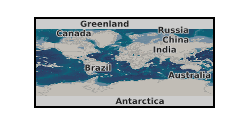
Data generated at UCL on a conventional triaxial apparatus used to deform three different sandstones at room temperature and 150 °C. The data includes the raw mechanical data (time, load, displacement, pore pressure, pore pressure volume and confining pressure) and the meaningful processed data used to plot figures and draw main conclusions (stress, strain, pore volume change, effective mean stress, inelastic strain, yield points and Youngs modulus). The three sandstones used were Bleursville, Locharbriggs and Boise Sandstone, and are denoted by data files SS, L and MBO respectively. This dataset is used in the paper: M. Jefferd, N. Brantut, P.G. Meredith and T.M. Mitchell, Compactive Deformation of Sandstone under Crustal Pressure and Temperature Conditionsserpentinite, submitted to J. Geophys. Res. And in the UCL PhD Thesis M.Jefferd, Sandstone under Crustal Pressure and Temperature
-
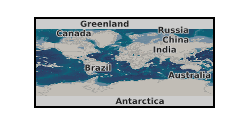
This information details the method of calculating dilatancy from pore volumometry measurements. In the velocity step tests, an initial shear enhanced compaction phase drastically reduces the sample pore volume until the sample yields. After the sample yields, the pore volume continues to decrease but at a lower rate of decrease. The imposed velocity steps cause compaction or dilation of the sample material that is superimposed on this overall compaction trend. Pore pressure is held at a set point in all tests and any volume changes in the control system are assumed to correspond directly to changes in pore volume in the sample. The method here is aimed at producing quantitative, reproducible values for dilatancy from experimental data. The script fits a polynomial function to all the volume data to give the overall trend of the shear enhanced compaction. The data position of the start of the velocity step of interest is entered manually into the function. When dilatancy occurs on a step change in velocity, this is not immediately recorded using volumometry, as the permeability of the sample will produce a transient response as pore fluid pressure equilibrates between the sample and the pore fluid pressure system. To discount time effects, every velocity step was processed with a ‘time_dep’ phase for the first 100µm of displacement after the imposed velocity step change. Using the values for ‘vel_step’ and ‘time_dep’, the volumometry data are split into separate matrices incorporating time and volume preceding and following the velocity step change. A linear regression model fits a polynomial curve to the pore volumometry data and returns the coefficient of determination (R2) for the fit of the model. The shear enhanced compaction phase prior to yield is included in the fit. The code incrementally adds the value entered for ‘step’ to the data in the velocity step of interest. This ‘step’ value is a positive or negative value depending on whether the velocity has increased or decreased, respectively. A new linear regression model is then fitted to the whole dataset and if the R2 value has increased, the code will continue to loop to add the value of ‘step’ to the pore volume data. It concludes when the R2 value reaches a peak and begins to decrease, as the fit is no longer improving. We assume at this point that the effect of the dilatancy due to the velocity step has been removed, and the cumulative sum of the ‘step’ values is equivalent to the dilatancy. As the loop goes one iteration past the optimum R2 value, the code reverts to the previous set of values with the best R2 value. In experiments with multiple velocity step changes, the code needs to retain the previous corrections of the data. The function ‘pf_correct’ is used to correct the velocity steps that have been previously processed. The values for ‘vel_step’, ‘time_dep’ and the returned value of ‘offset’ need to be given in the inputs for ‘pf_correct’.
-
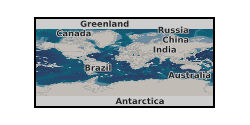
This data contains the results of numerical simulations described in the following two papers: Alisic L., Rhebergen S., Rudge J.F., Katz R.F., Wells G.N. Torsion of a cylinder of partially molten rock with a spherical inclusion: theory and simulation (2016) Geochem. Geophys. Geosyst.16 doi:10.1002/2015GC006061 Alisic L., Rudge J.F., Katz R.F., Wells G.N., Rhebergen S. Compaction around a rigid, circular inclusion in partially molten rock (2014) J. Geophys. Res. Solid Earth 119:5903-5920 doi:10.1002/2013JB010906
-
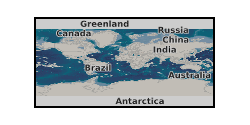
These data contain time series of stress, strain, confining pressure, pore pressure, pore volume, permeability and elastic wave velocities of samples of Purbeck Limestone deformed under hydrostatic and triaxial conditions at room temperature. All samples were saturated with decane as pore fluid.This dataset is used and fully described/interpreted in the paper: Brantut, N., M. Baker, L. N. Hansen and P. Baud, Microstructural control of physical properties during deformation of porous limestone, submitted to J. Geophys. Res.
-
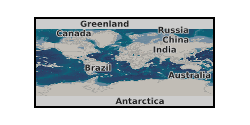
We examine the role of cement on compaction band formation by performing triaxial tests on three sandstones, Bentheim, Castlegate and a synthetic sandstone which possess very similar porosities (~26-29%) and grain sizes (~230-300 µm), but which are cemented differently, with syntaxial quartz overgrowths, clay, and amorphous quartz cement respectively. Each sample was taken to 5% axial strain at a starting effective stress equivalent to 85% of its hydrostatic yield (P*) value, which were identified from yield under hydrostatic loading. These data for the 3 samples are presented as matlab data files. Post-deformation, each of the 3 cores underwent backscatter SEM and subsequent image analysis to examine any localised variations in porosity and grain size. These data are presented as csv files. Discrete bands form in each of the 3 sandstones but are distributed differently across each sample. Our results suggest that cement type plays a significant role in the micromechanics of deformation within each of the sandstones, which in turn, determines where the compaction bands nucleate and develop. These results may provide a starting point to investigate the role of cement on compaction localisation further.
-

Data are either (1) depths and spacings between stylolites and faults within Unit IV, (2) images from IODP drill core image logs of the locations of samples observed, (3) photomicrographs and flatbed thin section scans of thin sections cut from samples, (4) SEM BSE or EDS data collected at Cardiff University. These data form the basis of: Leah et al. "Brittle-ductile strain localisation and weakening in pelagic sediments seaward of the Hikurangi margin, New Zealand", Tectonics, Submitted. Images and data from samples collected at IODP Expedition 375 Site U1520 (38°58.1532'S, 179°7.9112'E, 3522.1 mbsl). This is just seaward (east) of the trench of the Hikurangi Margin, New Zealand.
 NERC Data Catalogue Service
NERC Data Catalogue Service